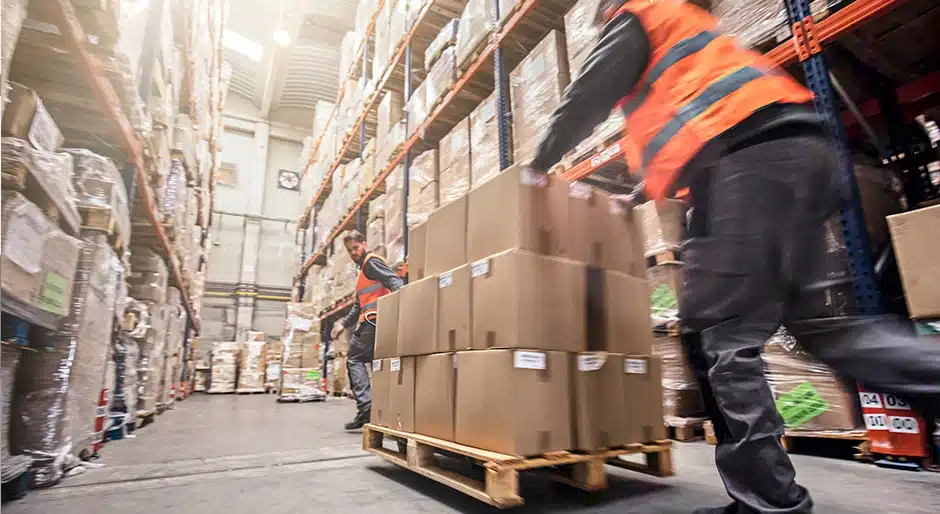Industrial and cold storage net-lease assets continue to benefit from COVID-19
Bolstered by changes in e-commerce, manufacturing, and supply chains, net-lease assets remain attractive investment opportunities due to their relative yield and stable cap rates
While many industries faced unique challenges resulting from the COVID-19 pandemic, net-lease assets still had a strong 2020 and they are currently enjoying a promising start to 2021. In particular, the underlying resilience of industrial assets including cold storage facilities, provided value for investors in a challenging market and they continue to remain highly attractive investments.
E-commerce growth explodes
Rising e-commerce sales were the driving factor for growth in both industrial distribution and cold storage facilities, and we believe that this trend should continue in both the near- and long-term. The shift represents an acceleration of the secular trend of consumers who are increasingly adopting e-commerce. This trend is also substantiated by strong non-store retail sales in March 2021, which reached an all-time high, according to the U.S. Census Bureau. Consumers are also demanding shorter delivery times, which is leading online retailers to occupy a greater number of last-mile facilities located in densely populated areas that allow for one-day shipping. As e-commerce sales continue to rise, so will tenant demand for industrial facilities throughout the United States.
Reshoring manufacturing gains momentum
Another trend that makes industrial net-lease assets attractive from an investment standpoint is that manufacturers are increasingly reshoring manufacturing processes they used to house overseas, as more companies aim to localize their supply chain in the United States. Furthermore, the Biden administration has signaled broader structural reforms aimed at both reducing supply-chain risks and slowing or reversing manufacturing job losses longer-term by making manufacturing in the U.S. more attractive.
This trend will help companies soften any supply chain-altering events such as the COVID-19 pandemic or the blocking of the Suez Canal, and in turn create more demand for both distribution and manufacturing real estate assets in the United States.
Inventory and space needs increase
Prior to the COVID-19 pandemic, many industrial users employed a “just-in-time” inventory strategy, meaning that there were short hold times for inventory, with little excess product being held in warehouses. While this method is efficient and requires less warehouse space, it is vulnerable to supply shocks, which came to fruition last year and early this year. As a result of supply shocks experienced over the last twelve months, industrial users will likely keep more inventory on hand, thus creating an increase in demand for industrial distribution space.
Industrial continues to be the most attractive sector from an investment standpoint, as it benefits from strong supply and demand fundamentals – this is evidenced by 247 million square feet of positive net absorption and 3.9 percent rental growth over the last 12 months, according to CoStar. These positive fundamentals are being driven by significant demand growth from tenants for newly constructed, class A industrial facilities.
Cold storage remains hot
Cold storage assets have also seen rising demand in recent years due to consumer preferences shifting toward organic foods and online grocery shopping and delivery. Additionally, more consumers are shying away from foods that contain preservatives, which is creating a new constraint for grocers and food distributors who need to keep more food cold to maintain freshness. We believe that online grocery shopping will not just be a fad tied to the pandemic – it is here to stay. According to data from eMarketer, online grocery sales grew 53% in 2020 to surpass $89 billion.
We believe that many of these households will continue to order their groceries online even after the pandemic is over. Furthermore, despite the high cost per square foot associated with cold-storage industrial development, many industrial investors view the asset class as a viable investment due to strong supply and demand fundamentals. According to CBRE, the average U.S. cold storage facility is 34-years-old, and many cold storage users are seeking modern, class A facilities with greater clear heights and more significant levels of automation. However, these facilities are in shorty supply, and many investors view this supply and demand imbalance as an opportunity for investment. As a result, new players are entering the cold storage industry, as more institutional investors are partnering with cold storage developers to facilitate development in the United States. With this influx of capital in the space, cold storage assets are likely to continue to see an increase in liquidity.
Investment opportunities in net-lease assets
We believe that this is just the beginning of a long-term growth period for net-lease assets as they will continue to attract institutional capital due to the global hunt for yield. As of April 30, the S&P Corporate Bond Index featured a yield to maturity of 2.3 percent, while U.S. single-tenant office and industrial cap rates averaged between 6 percent and 6.3 percent. Institutional investors will view the relative yield offered by the net-lease asset class positively in comparison to corporate bond yields, while also focusing on the key characteristics of net-lease assets like long-term leases to credit worthy tenants that generate predictable, bond-like long-term cash flows.
In terms of the facilities themselves, we believe that class A industrial facilities should perform well over a long-term horizon. These newer facilities typically have stronger residual values, which helps mitigate investor risk. Location is another factor driving residual values. When determining whether an asset is well located or not, we typically focus on evaluating the surrounding population density and the property’s access to infrastructure points such as interstate highways and airports.
Looking ahead, while COVID-19 still presents uncertainties, we see a silver lining in related trends and the investment opportunities they will continue to create in the net-lease space this year and beyond.
James Koman is the founder and CEO of ElmTree Funds.

